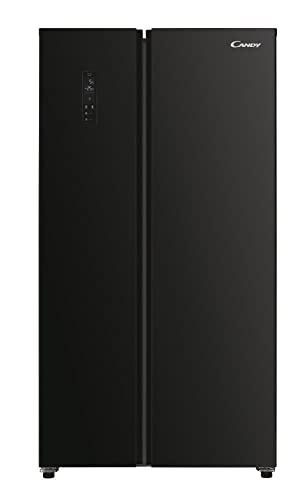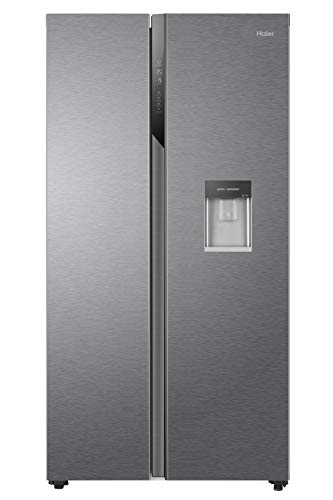Five Killer Quora Answers On Refridgerator UK
페이지 정보

본문
 The History of the Refrigerator
The History of the RefrigeratorThe conventional refrigeration of food generates significant greenhouse gas emissions due to refrigerant leakage, and the use of electricity. In 2019 the emissions from these sources accounted for 3.2 percent of the total Refridgerator Uk annual territorial GHG emissions.
 Fridges didn't become widespread in British homes until the summer of 1959. Prior to that, the majority of households relied on cold slabs in their pantries. These were inefficient at maintaining an even temperature and caused much food spoilage.
Fridges didn't become widespread in British homes until the summer of 1959. Prior to that, the majority of households relied on cold slabs in their pantries. These were inefficient at maintaining an even temperature and caused much food spoilage.The History of Fridges In The UK
Fridges are one of the most important kitchen appliances that allow us to keep food and drinks fresh for days at one time. They are also extremely efficient in energy use. It's easy to forget that fridges were once considered a luxury, however. In reality, it wasn't until the 1950s that they began to take off. It was the summer heat of Britain that made them popular.
Before refrigerators were invented, people used insulated iceboxes to keep their food cool. In the winter they would collect blocks of ice sale on fridge freezers uk lakes and store them for the warmer months. These ice boxes were far from ideal, however. These ice boxes were heavy and needed to be carried by an "ice man". In 1918 the first electric refrigerators were released to the market. However it took a while before they were widely used in homes.
The efficiency of fridges has improved significantly over the years. They use less energy than they did a decade ago and some refrigerators consume as little as 4 kW*h per day (equivalent to 170 W continuously). A lot of domestic refrigerators come with an energy rating of A+.
In the early 1950s manufacturers introduced fridges with freezer compartments that were separate. They also started producing models with a chrome finish which was quite popular at the time. Since then, refrigerators are offered in a variety of colours and finishes. In the 1960s, pastel colors such as turquoise and pink were very popular. Earth tones, like avocado green and almond, became more popular in the 1970s and the 1980s. In the 1990s, stainless steel began to dominate.
Fridges in the 1920s
Before refrigerators, people made use of wooden and insulated "ice boxes" to store fresh food and drinks. The ice man would deliver blocks of ice to fill them up, and they kept things cool throughout the year. Ice boxes were typically found in the kitchens of well-off households.
In 1918 the first electric refrigerator was released. It was atop the existing ice box in a house. They were heavy, noisy and costly. The motor was located on the top of the refrigerator cabinet. They were also referred to as monitor-tops. William C. Durant purchased the Mellowes Refrigerator Company in 1918 and established the Guardian Frigidaire to mass-produce refrigerators. Durant was influenced by a concept created by Cistercian Monk Marcel Audiffren, and Swiss Engineer Albert Singrun. It was an absorption refrigerator for sulfur dioxide.
In the 1920s, these new refrigerators became affordable for many homes. They could hold more food and beverages, and kept it colder for longer than old ice boxes.
Refrigerator advertisements were imaginative and captivating, with promises of cold drinks and fashionable designs. These ads are fascinating to read as they offer an insight into the way things were in the past.
At the end of the 1920s the electric refrigerator was present found in almost all homes. Electric utilities helped promote this trend by offering rebates on their bills to customers who bought refrigerators. During the Great Depression, these appliances were considered crucial to home survival and their popularity grew even more.
Fridges in 1950s
Fridges were still relatively rare in the 1920s, but they became more commonplace in the 1950s. By the late 1960s, they were common in most homes.
The majority of early fridges were utilitarian and had simple designs that were suited to the decor of the kitchen of the time. They were usually smaller fridges with legs visible, with a wide variety of colors available (though the majority were in the pastels - think mint greens). During this period there were a variety of firms that made fridges, including Whirlpool (who had recently emerged as a top brand), Gibson, Hotpoint and Tappan.
All of these brands were famous for their high-quality, reliable refrigerators. They also expanded their product lines, offering different kinds of home appliances. Crosley for instance, was first an audio manufacturer before moving into refrigerators in the year 1940. They were famous for their compact fridges which fit in small space.
In the 1950s, refrigerators became more elegant and were advertised to women as a status symbol. They were designed to match the cabinets and walls of the kitchen, and were typically white with chrome handles.
In the 1960s, refrigerators started to evolve into gadgets that included separate freezer sections and ice-cube makers. The manufacturers also began to use cheaper materials, allowing them to offer their products at lower costs.
Fridges in the 1960s
In the 1960s, fridges were a necessity in a lot of households. Some families even had two refrigerators. They were costly for a while - in America the average refrigerator cost $600 (that's about $7000 in 2024 dollars) - but at the end of the 60s, they were down to $200.
The refrigerator was a major advancement at the time, revolutionizing kitchens and changing the way we preserved food. The fridge also increased the comfort of homes as it made meat and dairy fresher longer, which enabled people to buy in bulk and prepare meals in advance and store them for later.
The first refrigerators used poisonous gases like ammonia, methyl chloride, and sulfur dioxide for refrigeration but this was dangerous for humans as these gases escaped from refrigerators. In 1929 carbon dioxide was introduced as a safe way to cool food items. A number of people were poisoned, and died.
This means that manufacturers could design more efficient and safer refrigerators for use in homes, with some refrigerators having an inside freezer compartment that could be accessed by opening the refrigerator door. These were known as bi-door refrigerators and were very popular in the 1950s and 60s.
The 1960s refrigerators were sleeker and more futuristic. They were curved with soft curves and a sleek look that suggested an era of efficiency and domestic freedom. The refrigerators were large but the boxy look of the 1940s was fading.
Fridges Today
The modern fridge freezer comes in a wide range of styles, colors and finishes to suit individual tastes and kitchen decors. Certain fridge freezers feature smart features that are connected to Wi-Fi. This allows you to quickly customize the settings. Others have a built in camera to check inside the refrigerator.
French door models have taken over the market, as people are looking for modern designs and features such as water or ice dispensers, flex drawers and in some cases a smart screen. A majority are also rated as A, B or+ in energy efficiency ratings, following changes to the mandatory labelling scheme for UK appliances.
We are awestruck by this Hotpoint model for its sleek design. It features a clever UVNano technology that auto-sterilizes the fridge to kill bacteria and two salad drawers that have adjustable humidity sliders. It's also big with plenty of storage room for bottles and jars as well as a spacious storage box inside the door of the fridge freezers for sale uk.
Find fridges that have the eco-friendly ICE+ feature that uses less energy. You can also save more money by opting for one with an automatic ice maker. This will create a constant supply of ice ready to use in the morning.
A fridge that's A or A+ in energy efficiency is one of the best fridge freezers uk ways to help the environment. It's also a good idea to take into consideration the fridge's annual electricity usage as part of your budget for household appliances when deciding on a new appliance. It is crucial to remember that we can't afford take electricity for granted. Everyone deserves access to affordable, reliable and plentiful electricity to live a healthy life and feel comfortable, as well as help protect the earth.
- 이전글5 Rollator Instructions From The Pros 24.12.25
- 다음글seo for website 24.12.25
댓글목록
등록된 댓글이 없습니다.